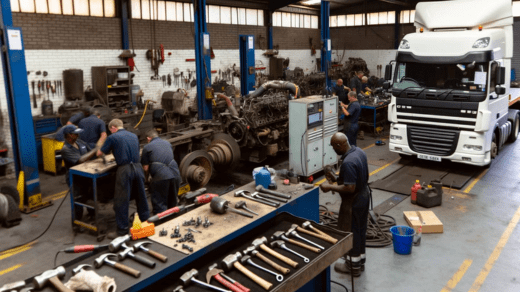
Ensuring that your car operates smoothly and safely involves a multitude of factors, with tire maintenance ranking high among them. Among the various aspects of tire care, tire rotation stands out as a crucial practice often overlooked by many drivers. Proper tire rotation not only extends the lifespan of your tires but also enhances overall vehicle performance and safety. In this article, we delve into the significance of tire rotation, its benefits, and the optimal practices to adopt.
Understanding Tire Rotation
Tire rotation is the process of moving tires from one position on a vehicle to another. This redistribution of tire positions is vital because each tire wears differently depending on its location on the vehicle, the type of vehicle (front-wheel drive, rear-wheel drive, all-wheel drive), and driving habits. Typically, the front tires wear out faster than the rear ones due to factors like steering and weight distribution.
Benefits of Tire Rotation
- Extended Tire Lifespan: Regular rotation ensures that tires wear evenly, preventing premature wear and extending the lifespan of your tires. This not only saves you money but also reduces the frequency of tire replacements.
- Improved Performance: Even tire wear contributes to consistent traction and handling, enhancing the overall performance of your vehicle. This is especially crucial for maintaining stability and control during adverse driving conditions such as rain or snow.
- Enhanced Safety: Uneven tire wear can lead to unpredictable handling, reduced braking efficiency, and increased risk of blowouts. By promoting uniform wear patterns, tire rotation helps maintain optimal traction and stability, thereby enhancing safety on the road.
Optimal Rotation Patterns
The optimal car tire rotation pattern varies depending on factors like the type of vehicle and tire wear patterns. However, a common recommendation is to follow the rotation pattern specified in the vehicle’s owner’s manual.
For most vehicles with non-directional tires (those that can rotate in both directions), a simple rotation pattern involves moving the front tires straight back and swapping the rear tires diagonally to the front. This pattern ensures that each tire assumes a different position on the vehicle, promoting even wear.
For vehicles with directional tires (those designed to rotate in a specific direction), the rotation pattern is more limited, typically involving moving the front tires straight back and swapping the rear tires to the front on the same side.
Frequency of Rotation
The frequency of tire rotation depends on several factors, including the vehicle type, driving habits, and road conditions. As a general rule of thumb, experts recommend rotating tires every 6,000 to 8,000 miles or during every other oil change. However, it’s essential to check the manufacturer’s recommendations for your specific vehicle model.
Additionally, certain signs may indicate the need for more frequent tire rotation, such as uneven tire wear, vibrations, or changes in vehicle handling. In such cases, it’s advisable to inspect and rotate the tires promptly to prevent further damage.
Professional Assistance and RV Repair
While tire rotation is a relatively straightforward maintenance task, some drivers prefer to enlist the help of professionals to ensure proper execution. Professional auto service centers offer comprehensive tire services, including rotation, balancing, and alignment, to keep your vehicle running smoothly and safely.
Moreover, for owners of recreational vehicles (RVs) seeking comprehensive maintenance and repair services, professional assistance is invaluable. Alongside tire rotation, RV repair specialists offer expertise in addressing a wide range of issues, from engine repairs to electrical system diagnostics, ensuring that your RV remains in top condition for your adventures on the open road.
In conclusion, tire rotation is a fundamental aspect of vehicle maintenance that should not be overlooked. By promoting even tire wear, tire rotation extends the lifespan of your tires, enhances vehicle performance, and improves safety on the road. Whether you’re driving a compact car or a spacious RV, incorporating regular tire rotation into your maintenance routine is essential for maximizing performance and longevity.




